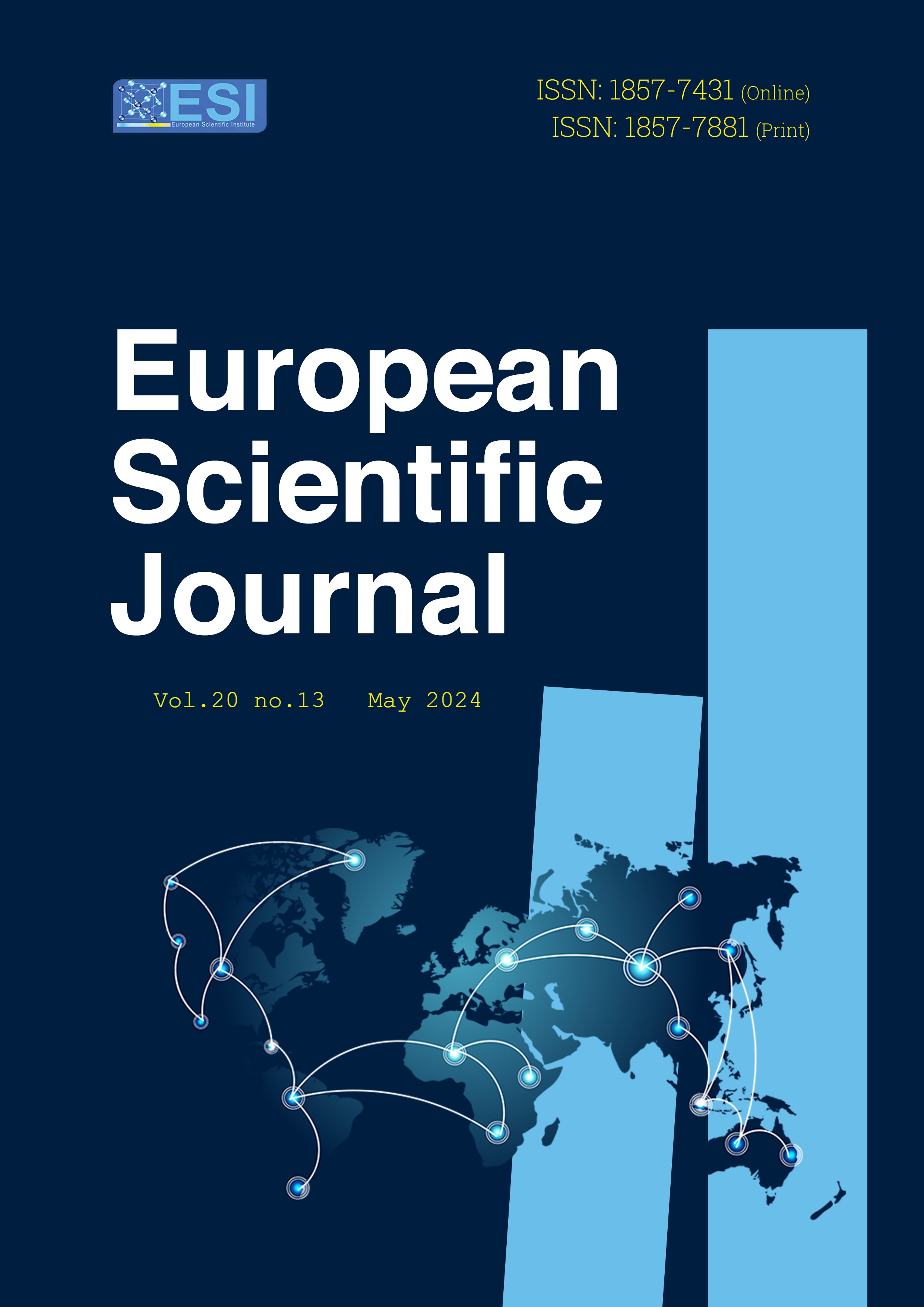Analysis of the Integration Process of Vulnerable Communities in Social and Economic Development: Batwa Community of Muyange Site Two
Abstract
The lack of access to food, education, housing, medical healthcare, freedom of participation, and sanitary facilities are some characteristics of vulnerability. Vulnerability can arise from an individual, community, or larger population challenges, requiring diverse policy interventions from social and economic neighborhood development, and income policies, to individual medical support. Therefore, this study aims to analyze the integration process of vulnerable communities in social and economic development, specifically focusing on the Batwa community of Muyange Site Two. The study's objectives are: (1) to identify the living conditions of the vulnerable Batwa communities in Muyange Site Two, (2) to highlight factors hindering the integration process in social and economic development, (3) to explore the role of local administration in integrating vulnerable communities, and (4) to propose practical solutions expediting the Batwa community's integration. Employing stratified random sampling, the research included 50 households from a total of 200 households. It combined qualitative and quantitative methods, using interviews and questionnaires administered directly to the Batwa community. The study revealed challenges faced by the Batwa in accessing food, land for agriculture, and education, leading to extreme poverty. It also identified strategies for the Batwa, local administration, and the government to accelerate integration, emphasizing self-reliance and government support for housing and land ownership to overcome discrimination in the social and economic integration process.
Downloads
Metrics
PlumX Statistics
References
2. Amnesty International. (2019). Indigenous peoples. Amnesty International. https://www.amnesty.org/en/what-we-do/indigenous-peoples/
3. AU-UA and IWGIA. (2007). Report of the African Commission’s Working Group on Indigenous Populations / Communities. Transaction Publishers: America.
4. Ball, E., Steffens, M. C., & Niedlich, C. (2022). Racism in Europe: Characteristics and Intersections With Other Social Categories. Frontiers in Psychology, 13. https://doi.org/10.3389/fpsyg.2022.789661
5. Burundi Constitution, March 18th, 2005.
6. Brady, D. (2019). Theories of the Causes of Poverty. Annual Review of Sociology, 45(1), 155–175. https://doi.org/10.1146/annurev-soc-073018-022550
7. Cormoș, V. C. (2022). The Processes of Adaptation, Assimilation and Integration in the Country of Migration: A Psychosocial Perspective on Place Identity Changes. Sustainability, 14(16), 10296. https://doi.org/10.3390/su141610296
8. Cummins, E. (2019). Social Integration: Definition & Theory - Video & Lesson Transcript | Study.com. Study.com. https://study.com/academy/lesson/social-integration-definition-theory.html
9. Galbraith, J. K. (1980). Théorie de la Pauvreté de masse. Paris: Gallimard.
10. Hergum, H. P. (2000). Indigenous people – What, why, and how? Support your work with indigenous people. NCA- Occasional paper no 3/2000.
11. Janssen, P. (2015). Developing the Batwa of Burundi: On Diverging Perspectives and the The worldview of the “Other”. Universiteit Gent.
12. Javeau, C. (1972). L’Enquête par questionnaire. Manuel à l’usage du praticien. Bruxelles: Institut d’ULB.
13. Jounot, A. (2004). Le développement durable. Paris: AFNOR.
14. Kamali, M. (1999). Distorted Integration: Problem of Monolithic order. In Innovation: The European Journal of Social Sciences, 12(1).
15. Khan, N. S. (2000). Non-economic Factors in Development. The Pakistan Development Review, 39(4), 715–725. https://www.jstor.org/stable/41260293
16. Kothari, C. R. (2004). Research Methodology: Methods and Techniques, 2nd Revised Ed. New Age: India.
17. Kreuter, M. W., Thompson, T., McQueen, A., & Garg, R. (2020). Addressing Social Needs in Health Care Settings: Evidence, Challenges, and Opportunities for Public Health. Annual Review of Public Health, 42(1). https://doi.org/10.1146/annurev-publhealth-090419-102204
18. Lewis, J. (2000). The Batwa Pygmies of the Great Lakes Region. Minority Rights Group (MRG) International Report.
19. Lewis, J. (2001). Les Pygmées Batwa de la région des Grands Lacs. Londre: Sage Publication, Inc.
20. Margaretha Wewerinke-Singh, Garg, A., & Shubhangi Agarwalla. (2023). In Defence of Future Generations: A Reply to Stephen Humphreys. European Journal of International Law. https://doi.org/10.1093/ejil/chad033
21. Merriam-Webster. (2019). Definition of VULNERABLE. Merriam-Webster.com. https://www.merriam-webster.com/dictionary/vulnerable
22. Minorities and indigenous peoples. (2024, January 30). UNHCR. https://emergency.unhcr.org/protection/persons-risk/minorities-and-indigenous-peoples
23. Mugenda, M. Olive, & Mugenda, G. Abel (1990). Research Methods: Quantitative and Qualitative Approaches. Kenya: ACTS.
24. Ndabarushimana A. (2021). Le Burundi face aux besoins fondamentaux de sa population. Dans les secteurs de l’eau, de la santé et de l’éducation. Paris: Harmattan.
25. Porte, E. (2005). Reconciling polarized relations: Disintegration and social dynamics of conflict in Northern Ireland. The document presented at the meeting of the United Nations Expert Group titled "Dialogue in the Social Integration Process: Building Peaceful social Relations by, for and with people," New York.
26. Rapport du Groupe de Travail de la Commission Africaine sur les populations/communautes Autochtones, Mars – Avril (2005).
27. Republic of Burundi, (2003). Arusha Peace and Reconciliation Agreement for Burundi.
28. Rocher, Guy. (1985). Introduction à la sociologie : Le changement social. Paris: Nathan.
29. Rwantabagu, H. (2009). Problems and Prospects in the Education of a Marginal Minority: The case of Batwa Community in Burundi. Diaspora, Indigenous, and Minority Education: Studies of Migration, Integration, Equity, and Cultural Survival, 3(2).
30. Sen, A. (1996). What’s the point of a development strategy? Harvard University: London.
31. Toivanen, R. (2011). Journal on Ethnopolitics and Minority Issues in Europe. University of Helsinki.
32. Torado, M., & Smith, S. S. (2012). Economic Development (11th ed.). New York: Pearson, New York University.
33. United Nations. (2019). Human Rights | United Nations for Indigenous Peoples. United Nations. https://www.un.org/development/desa/indigenouspeoples/mandated-areas1/human-rights.html
34. Wikipedia Contributors. (2019a, January 22). Poverty. Wikipedia; Wikimedia Foundation. https://en.wikipedia.org/wiki/Poverty
35. Wikipedia Contributors. (2019b, March 11). Likert scale. Wikipedia; Wikimedia Foundation. https://en.wikipedia.org/wiki/Likert_scale
36. Wikipedia Contributors. (2019c, April 2). Indigenous peoples. Wikipedia; Wikimedia Foundation. https://en.wikipedia.org/wiki/Indigenous_peoples
37. Wilkinson, D. (2019). LibGuides: Research Support: Research Methodology. Wits.ac.za. https://libguides.wits.ac.za/c.php?g=693518&p=4914913
38. Xie, P., Cao, Q., Li, X., Yang, Y., & Yu, L. (2022). The effects of social participation on social integration. Frontiers in Psychology, 13. https://doi.org/10.3389/fpsyg.2022.919592
Copyright (c) 2024 Alexis Ndabarushimana, Desire Ndayizeye

This work is licensed under a Creative Commons Attribution 4.0 International License.








